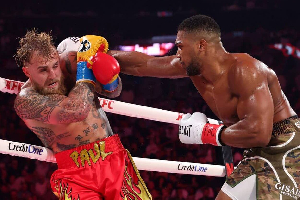General News of Tuesday, 22 July 2025
Source: www.mynigeria.com
I don't wear Igbo attire borrowed from other cultures - Reno Omokri
Former presidential aide Reno Omokri has revealed why he exclusively wears Yoruba attire, rather than Igbo attire, which he says is borrowed from other cultures.
Omokri has, of late, been rocking Yoruba Aso Oke and other fabrics made by Yoruba people, urging other Nigerians to follow in his steps.
After sharing a photo of him wearing one of the fabrics, one Okafor on Facebook wondered why he never wears Igbo attire.
"You're not a detribalised Nigerian. I've never seen you wear an Igbo attire. Not even once," Okafor wrote.
In response, Omokri revealed that what Igbo people often refer to as their attire was borrowed from foreigners during the colonial era.
READ HIS ACCOUNT BELOW.
Dear Okafor,
Thank you for your feedback. Okafor, if you can provide me with an authentic Igbo attire, I will wear it. So far, I am yet to see one.
Isi-Agu, the most common so-called Igbo attire, is not of Igbo origin and does not stem from Africa.
Please fact-check me: Isi-agu originated as a colonial-era upholstery material for chairs and curtains. Even today, it is still used as upholstery in poorer parts of the world.
The so-called traditional cap often worn with Isi-agu is also another colonial relic.
Please read page 288 of the book, What Britain Did to Nigeria: A Short History of Conquest and Rule, by renowned historian, Max Siollun, to learn more about the 'traditional' Igbo cap of nobility. The British gave that so-called 'traditional' cap to Warrant Chiefs as a sign of authority. That is why Warrant Chiefs were more commonly known as Red Cap Chiefs in Igboland.
As for the Okpu-Agu, again, please fact-check me: If you read the journals of Macgregor Laird, you will find that British, Scottish and Irish sailors, missionaries and colonialists always wore the head warmer, or beanie, as they crossed the Atlantic from the cold climate of Europe to the warmer weather of West Africa.
When they arrived, they either discarded their head warmers or sold them to primitive natives.
Now, consider our weather. Would wearing woollen headgear make sense in West African weather?
Also, wool was unknown to the Igbos until after colonialism, and the Okpu Agu is not made out of cotton. It is fabricated from either real or synthetic wool.
Wool comes from the fleece of sheep. Before colonialism, did the Igbo have sheep? Even today, do the Igbos rear sheep?
For the sake of argument, let's agree that they may have sheep. How would they fleece the sheep, seeing as metal cutting materials, such as razors or shearers, were unknown to them before colonialism?
And finally, please fact-check me: Akwete cloth originated from Ijebu. You can read about it in the British historian John Gillow's 2003 book African Textiles: Colour and Creativity Across a Continent.
The Ijebu have been trading with the Ijaw for centuries. Many prominent Ijaws are actually Ijebu. For example, former Bayelsa Governor, Seriake Dickson, is an Ijebu man. He is from the Awujale's palace. His family went to trade in Ijaw land 200 years ago and never returned. Please fact-check me.
For hundreds of years, the Ijebu sold a fabric known as kaki to the Ijaws. Only in the 19th Century did the Ijaws in Ndoki resell Ikaki fabric to Igbo women from a village known as Akwete.
Those women began making a version of Ikaki, which the Igbos called Akwete cloth.
So, Okafor, if you can cite an authentic Igbo attire that predates colonialism, I will wear it tomorrow.
But I am not going to wear upholstery or a winter cap and call it cultural heritage because I want to be seen as detribalised!
Thanks again, and may God bless you.
ASA












